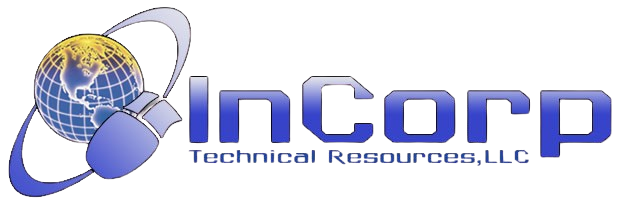Why Human Resources is Critical for Business Growth
Why Human Resources is Critical for Business Growth Home Blog Business growth doesn’t happen through guesswork—it’s built with structure, purpose, and people. Most companies prioritize sales and operations but neglect the systems that support people management. That’s where human resources comes in, aligning daily functions with broader goals. When HR becomes a growth partner, momentum turns into long-term success. What Human Resources Actually Does in a Business Human resources manages the whole employee lifecycle, from hiring and onboarding to training, performance, and exit. It ensures that the right people join, grow, and contribute meaningfully to the organization. HR also handles compliance, payroll, benefits, and workplace policies to keep operations smooth and legally sound. Beyond administration, HR strategically shapes culture, supports leadership, and aligns talent with long-term business goals. How Human Resources Drives Business Success Behind every thriving company is a successful people strategy. Human Resources is more than support—the system powers growth from within. It touches every part of the business, from hiring to culture to compliance. Understanding what HR truly does sets the stage for why it matters in every growth phase. Aligns People Strategy With Business Goals Human Resources aligns talent management with business direction. It translates leadership objectives into clear staffing plans and culture initiatives. With HR driving execution, every hire, policy, and workflow supports measurable outcomes. That makes scaling possible without compromising quality or vision. Strategic HR Planning Supports Long-Term Growth Strategic human resources planning bridges the gap between company goals and team capabilities. It involves forecasting workforce needs based on growth timelines, service expansion, or market entry. HR evaluates existing talent against those projections and identifies where to build or hire. It creates a balance between speed and sustainability. Leaders can avoid talent shortages while staying lean. Growth happens when people are ready before the demand arrives. Workforce Scaling Matches Business Demands HR ensures companies grow their teams in sync with operations. It assesses role gaps, workload shifts, and budget limits as demand increases. Instead of hiring reactively, HR builds a phased expansion plan. That keeps onboarding manageable and the culture consistent. Fast growth without HR guidance leads to confusion and a poor fit. A scaled workforce only works when it’s structured for what comes next. Builds a Culture That Drives Business Results Culture drives how people think, act, and collaborate. HR defines the culture and ensures it matches the brand’s identity, goals, and standards. It becomes a system for decision-making and engagement at scale. When culture is intentional, teams stay aligned and productive during growth. Purpose-Led Culture Improves Collaboration Culture isn’t just perks—it’s clarity, consistency, and behavior. HR helps define values that guide teams across departments, locations, and levels. These values shape how employees handle challenges, give feedback, and solve problems. People take more ownership when their expectations are clear. A culture rooted in purpose reduces friction and misalignment. It keeps people moving in the same direction, no matter how fast the business grows. Internal Communication Builds Team Alignment Information gaps slow progress and increase errors. HR builds internal communication systems that keep everyone in sync. It includes regular updates, manager check-ins, and employee listening tools. When people feel informed, they stay engaged. Communication from HR reinforces trust and stability, especially during change. The result is faster decision-making and fewer misunderstandings. Cross-Team Connection Increases Agility Departments naturally drift apart as teams grow. HR helps maintain cross-functional coordination through shared tools, project alignment, and cultural touchpoints. These systems prevent silos and encourage knowledge transfer. Employees learn faster when exposed to different perspectives. This agility helps companies respond quickly to market changes. Collaboration becomes the norm, not the exception. Hiring Systems That Support Scalable Growth Recruitment shapes the future of any business. HR manages the process so hiring decisions support both short-term goals and long-term vision. It goes beyond filling positions to building teams that drive performance. New hires must align with culture, skill needs, and business priorities. Hiring Strategy Aligns with Business Vision HR develops hiring strategies based on company objectives. Instead of reactive hiring, it prioritizes roles that deliver impact. Job descriptions are tailored to future demands, not just current gaps. This approach improves retention and performance. The right hire saves time, reduces costs, and accelerates growth. Every position becomes a stepping stone toward the company’s next milestone. Employer Branding Attracts Quality Candidates Top candidates evaluate more than job titles—they look at the company story. HR builds and promotes an employer brand that reflects workplace culture, growth paths, and leadership values. That shapes how applicants view the organization before applying. A strong employer brand attracts applicants who align with company values. It lowers turnover and boosts performance. HR ensures this brand is consistent across platforms and touchpoints. Streamlined Hiring Processes Reduce Drop-Off Complicated hiring processes push good candidates away. HR simplifies steps with clear timelines, interview standards, and consistent follow-ups. It reduces delays, increases applicant engagement, and enhances the candidate experience. This professionalism reflects company values and attracts serious talent. It also improves collaboration between hiring managers and HR. Efficient hiring gives businesses a competitive edge in fast-moving markets. Retention Practices That Strengthen the Workforce Retention results from good leadership, fair processes, and meaningful work. HR creates an environment where people feel valued, supported, and challenged. It reduces turnover through planning, communication, and personal development. Businesses grow stronger when their teams grow with them. Effective Onboarding Builds Long-Term Loyalty A great first week shapes an employee’s long-term view. HR creates onboarding experiences that welcome, train, and empower new hires. Transparent orientation processes reduce anxiety and speed up productivity. Employees know who to turn to and what success looks like. That early clarity leads to stronger performance. It also increases the chance that great talent stays long-term. Skills Development Boosts Job Satisfaction HR makes learning part of the company culture. It identifies skills gaps and offers training, mentorship, or certifications that help people grow. When employees improve, they feel more confident and capable. It directly impacts quality, efficiency, and innovation. Regular development also builds



